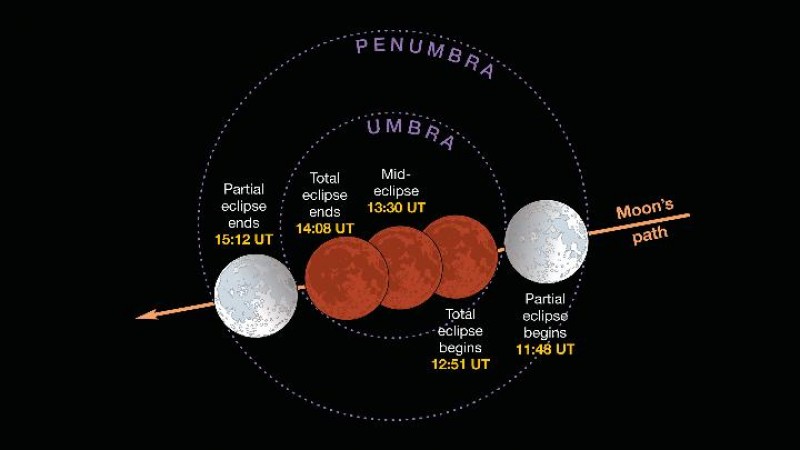This is the first total lunar eclipse to occur since 2015 and the first Blue Moon lunar eclipse since 1982. This full moon is also the third in a series of supermoons.
But what makes this Super Blue Blood Moon extra special is that it marks the first time since March 31, 1866, that a total lunar eclipse coincides with a Blue Moon in North America.

Specifically, Wednesday's Super Blue Blood Moon will be visible before dawn to people on the West Coast of the United States and most everywhere around the Pacific Rim. As long as it isn't a cloudy morning, viewers in these areas will witness each stage of the eclipse, according to the magazine Sky & Telescope.
If you're not in an area where the moon will be visible during the eclipse, you can follow along with one of many Super Blue Blood Moon live webcasts.
A lunar eclipse occurs when the sun, moon and Earth all line up, with Earth positioned between the moon and the sun. Here's what viewers can expect to see as the moon plunges through Earth's shadow.

Beginning around 3:20 a.m. PST (1120 GMT), the moon's leading edge will enter Earth's partial outer shadow, also known as the penumbra. However, it is not until about halfway through the penumbral stage that viewers along the West Coast of the U.S. will start to see a slight darkening on the lower-left side of the moon. At 3:48 a.m. PST (1148 GMT), the partial lunar eclipsebegins when Earth's full, dark shadow, also known as the umbra, slowly blankets the moon. Partiality will last for just over an hour, according to Sky & Telescope.
Finally, totality will start around 4:51 a.m. PST (1251 GMT) and last until 6:08 a.m. PST (1408 GMT). During this phase, the moon will move completely into the umbra and turn a deep, blood-red color.

"That red light you see is sunlight that has skimmed and bent through Earth's atmosphere and continued on through space to the moon," Alan MacRobert wrote in Sky & Telescope. "In other words, it's from all the sunrises and sunsets that ring the world at the moment."
Following the total phase of the lunar eclipse, the moon's edge creeps back into sunlight. Viewers will see the moon move through the remaining partial stages of the eclipse, until it has completely escaped the umbra and returns to full brightness.
Source: Samantha Mathewson